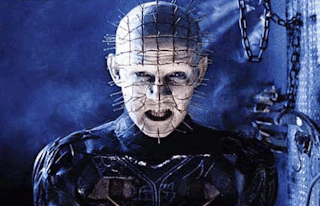The first game in the Resident Evil series follows the exploits of the S.T.A.R.S. (Special Tactics and Rescue Squad) team. Bizarre cannibalistic murders have taken place in the forest surrounding the small town of Raccoon City and the S.T.A.R.S. Bravo team is sent out via helicopter to investigate. Not long after their departure Bravo team crashes and the S.T.A.R.S. Alpha team catches the distress message. Alpha team is sent in to the rescue only to find the remains of the helicopter and a severed human hand before all hell breaks loose. The team is attacked by simplified dogs and as the flee farther into the forest the stumble upon the Spencer mansion. So the great conflict of being eaten alive by monster dogs or taking cover in a creepy mansion arises and of course creepy mansion wins. This is where the player begins. You either choose to play is Jill Valentine or Chris Redfield. Jill carries better weapons and has more item space, but Chris can handle more of a beating, great play mechanics right? Well it’s not long before you stumble upon a zombie and as you return to the only real safe part of the mansion you find that the rest of your team has pretty much abandoned you, well that’s true if you play as Chris. If you play as Jill you get the help of one Mr. Barry Burton, who resembles a burly lumberjack. At this point you might be blaming your plight on your fearless leader Albert Wesker, as well you should. Well long story short, a bunch of monster fights, bits of horrible dialogue, and one giant shark later you find out that Wesker was working for the pharmaceutical company Umbrella Corporation, who has secretly been developing biological weapons. The whole point of your little mansion adventure was to run a military team into zombies and mutant freaks to see if said mutant freaks were combat ready. So in a very James Bond like situation, Wesker corners you and explains his nefarious plan, while holding you at gunpoint of course, and in a very stupid move, releases a behemoth known as the Tyrant, which resembles Vin Diesel if he had a bad skin condition and a giant claw for a left arm. Well the Tyrant evidently isn’t to happy to be woken up, and chooses to impale Wesker before setting his ugly sites on you. Cue climatic fight in a creepy laboratory. Well make that anti-climatic. The fight is pretty easy and when I first played the game I was utterly disappointed. Of course this was before I learned the Resident Evil formula, which is first anti-climatic fight leads to actual climatic fight with a time limit. That’s right the whole mansion is set to self-destruct and you have to make it to the helipad. Of course once on the helipad Mr. pissed off Tyrant makes his return to make you crap your S.T.A.R.S. issued britches. This fight isn’t really all that difficult either, but it does have a satisfying ending consisting of a rocket launcher used to make Tyrant a big ass stain and a horrible memory. Although it really goes without saying, the remaining S.T.A.R.S. members board the helicopter and make it out of the mansion just in time to watch the fireworks from afar.
Oh Resident Evil movies, where do I even begin. I still remember the day I saw the preview for the first Resident Evil film. My fourteen year old brain almost shot out of my skull in excitement. I wish the preview would have been as far as I went because my curiosity only lead to great disappointment. I remember sitting in the theater and continually asking myself why they couldn’t just stick with the story from the game, why no leave well enough alone. Well they’ve managed to not follow the storyline for four movies now. The only similarities are some of the characters, Raccoon City, and the Umbrella Corporation. Other than that they are completely different entities. Now some years later I rewatched the first Resident Evil and managed to come to terms with the difference between the film and the game. Although I’m not nearly as interested in the events or characters, the film did manage to capture the same isolated feeling as the game as well as the idea of a militant team facing off against Umbrella’s monstrosities. Now I view the film as somewhat of a guilty pleasure, but that’s not to say I have any fuzzy feelings towards the sequels. For some reason unknown to even myself, I have watched each sequel and I have to say each effort just becomes more bizarre and more embarrassing. The plot is barely cohesive and it seems as if the writers just make up new rules as the story goes along. The worst part of all of this is that the studio plans to put forth more money into more sequels. Well I have a real swell idea. How about the directors and writers pull their heads from their posteriors and just start over again. Usually I hate the idea of reboots, but in this case they really just need to start again and actually follow the games. Of course the reason this doesn’t happen is because that would actually be something the real Resident Evil fans would want and we all know that isn’t important at all.











